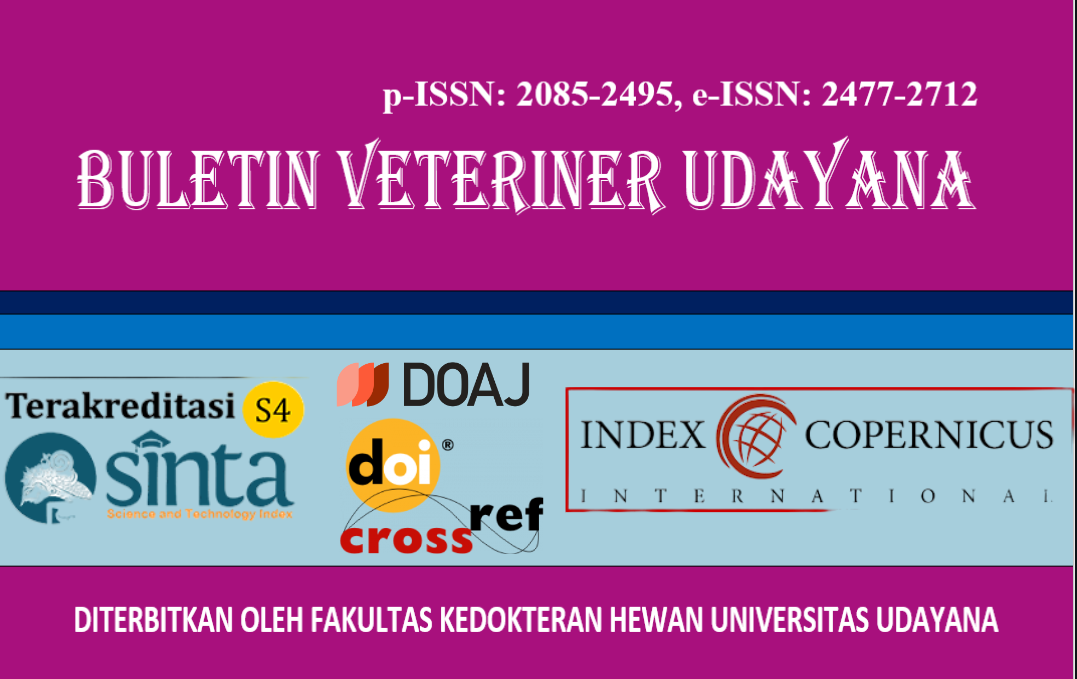ANTIBODY RESPONSE IN MICE IMMUNIZED WITH ASF_703 DNA VACCINE
DOI:
https://doi.org/10.24843/bulvet.2025.v17.i04.p03Keywords:
African Swine Fever, DNA vaccine, Mice, ELISA, Polymer, AntibodyAbstract
African Swine Fever (ASF) is a highly contagious viral disease in pigs, causing significant economic losses due to high mortality rate and the lack of an effective vaccine. On going vaccine development efforts include research at the Biomedical Laboratory of the Faculty of Veterinary Medicine, Udayana University, which previously developed the ASF_701 DNA vaccine. The study aimed to evaluate the immune response in mice to a novel ASD DNA vaccine formulation containing four additional genes (EP153R, A238L, DP96R, and S276R) and a polymer adjuvant. In this experimental study, mice were divided into two groups: a control group and a vaccinated group. Each mouse in the vaccinated group received a subcutaneous injection of 25 µg plasmid DNA in polymer adjuvant. The immune response was assessed using ELISA to detect ASF-specific antibodies at weeks 0, 1, 2, 3, and 4, with synthetic peptides as coating antigens. Optical Density (OD) values were statistically analyxed using SPSS version 25. The results demonstrated a significant difference (p < 0.01) in antibody levels between vaccinated and control mice, with serum collection time also showing a significant effect (p = 0.004). The finfings suggest that the new vaccine formulation elicits a measurable immune response. However, further studies are needed to improve the stability and long-term efficacy of the vaccine.




